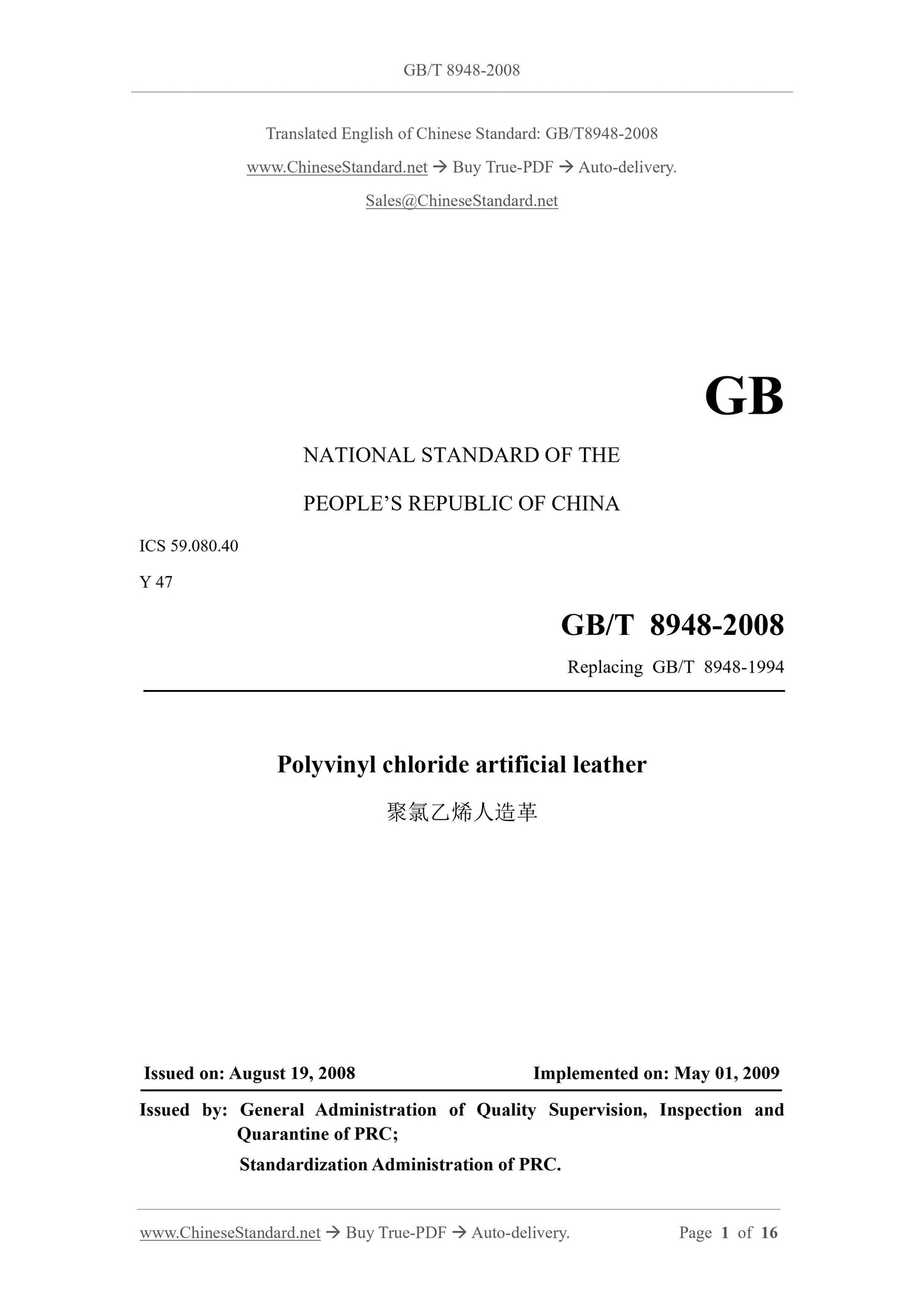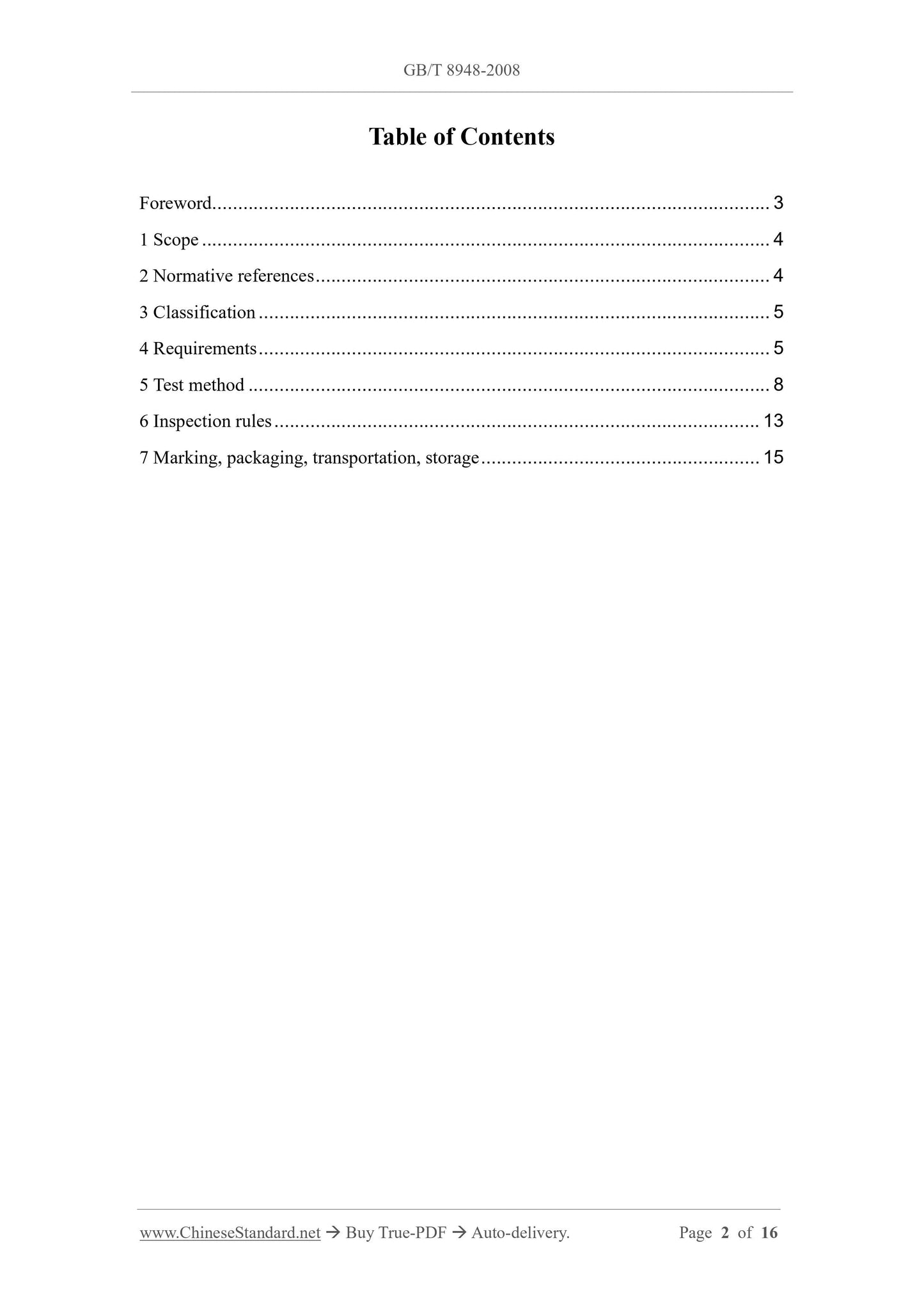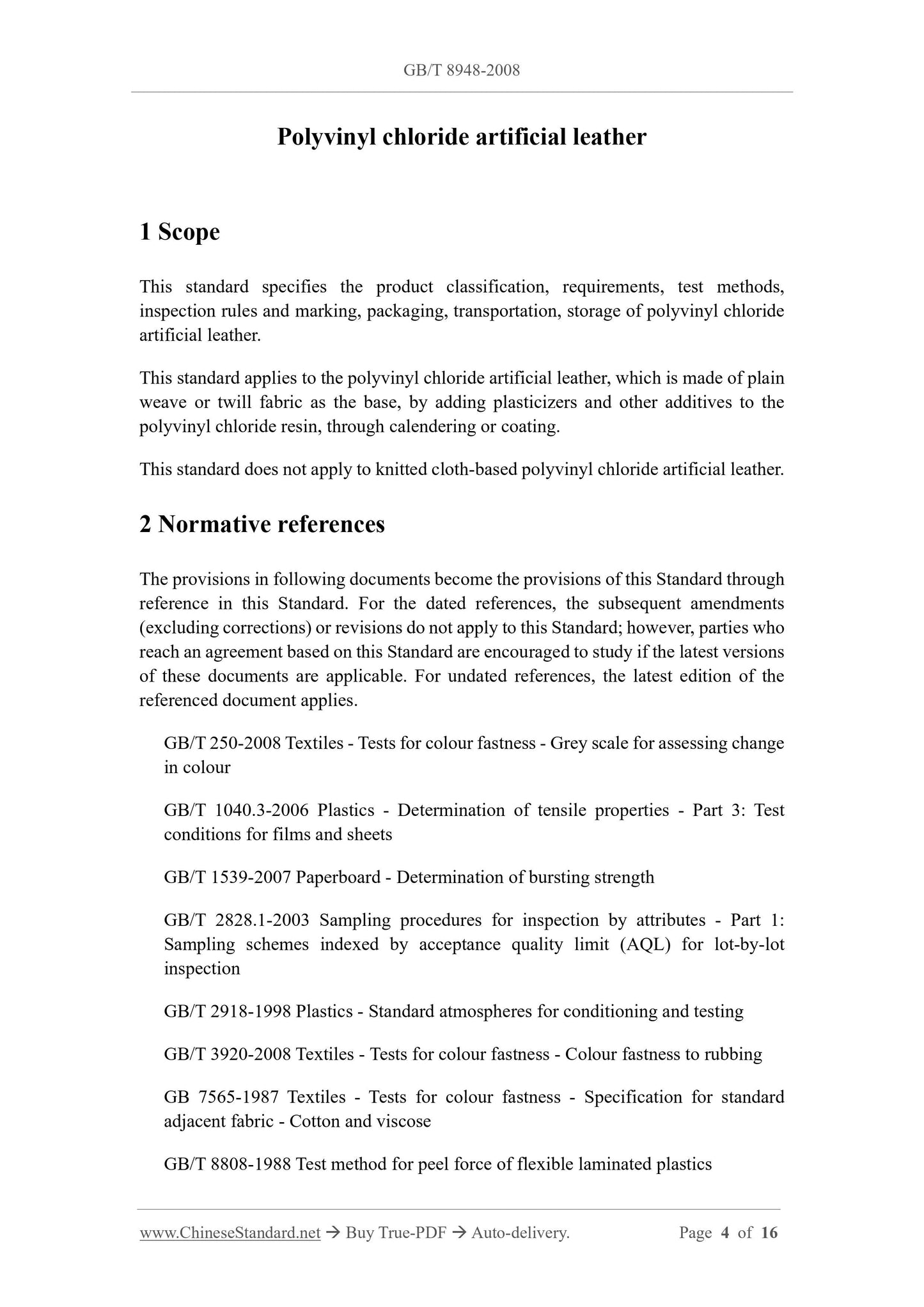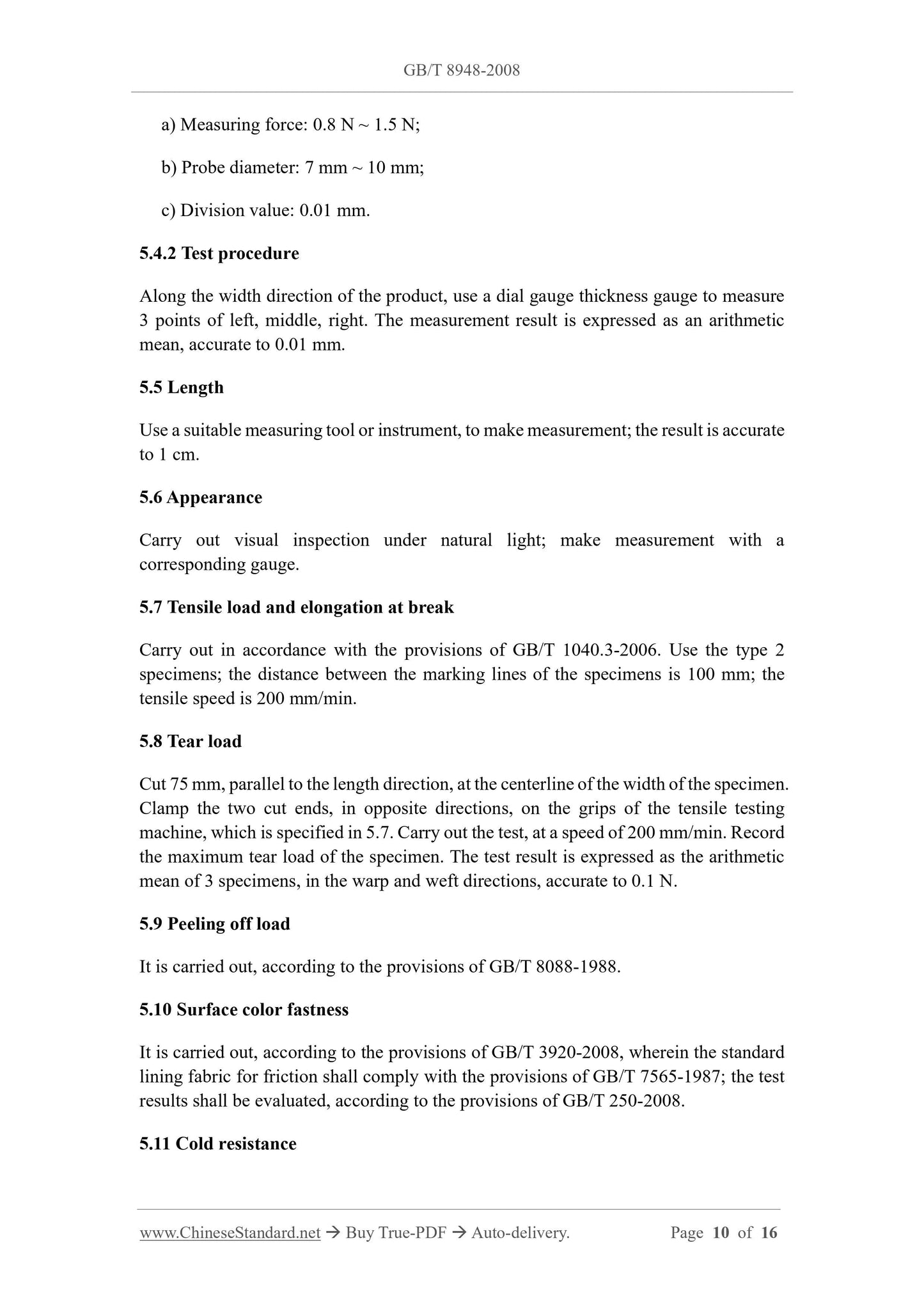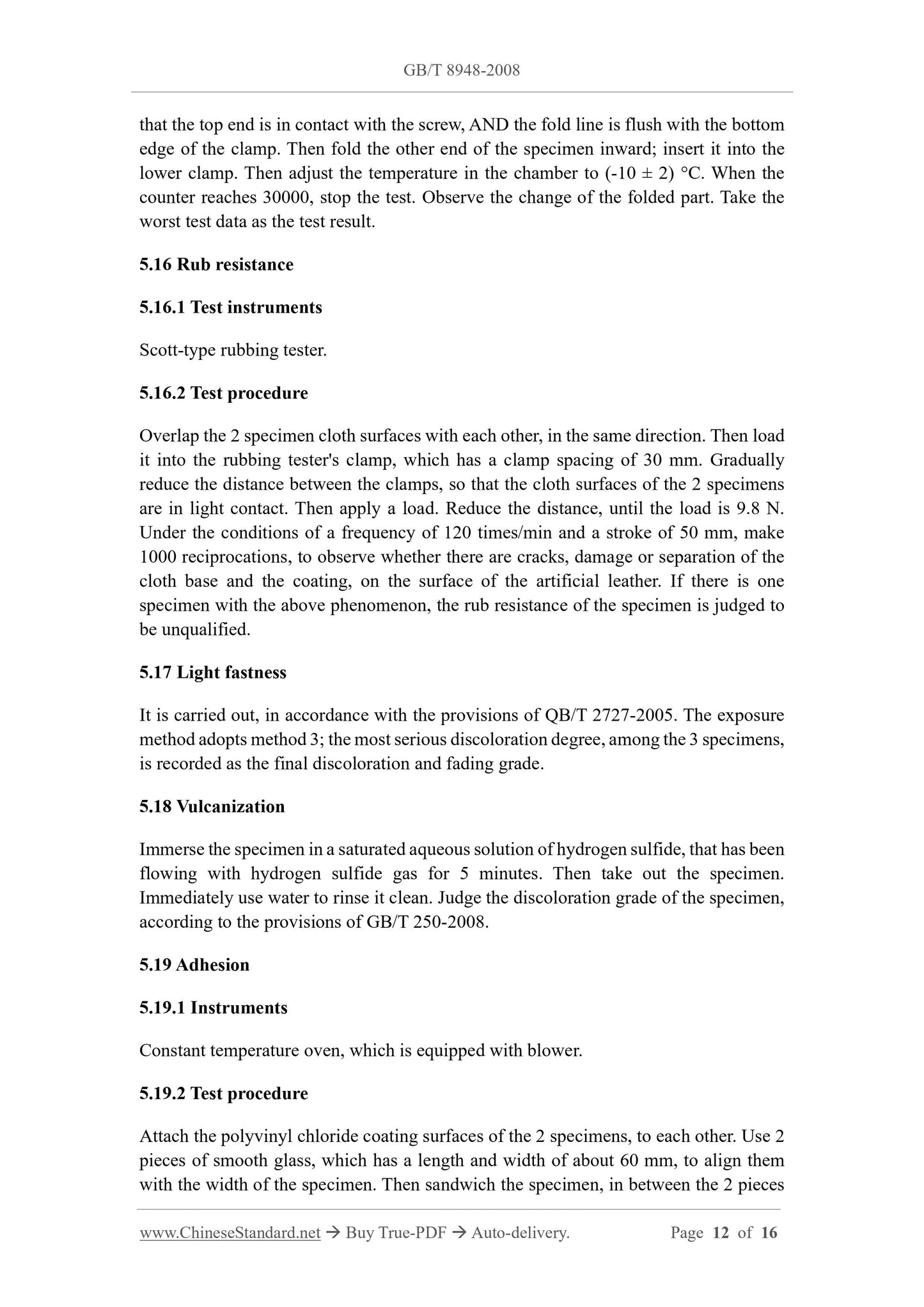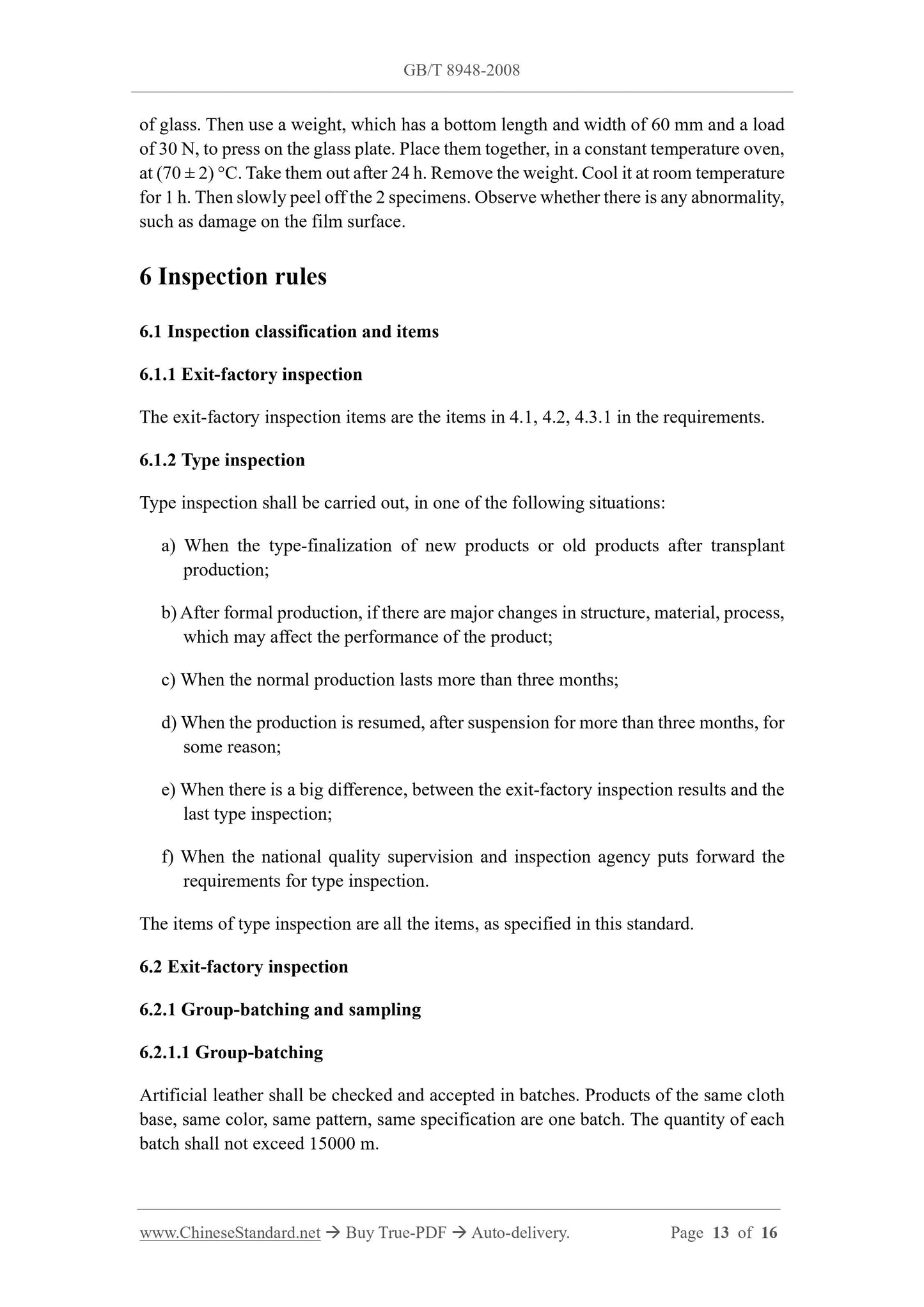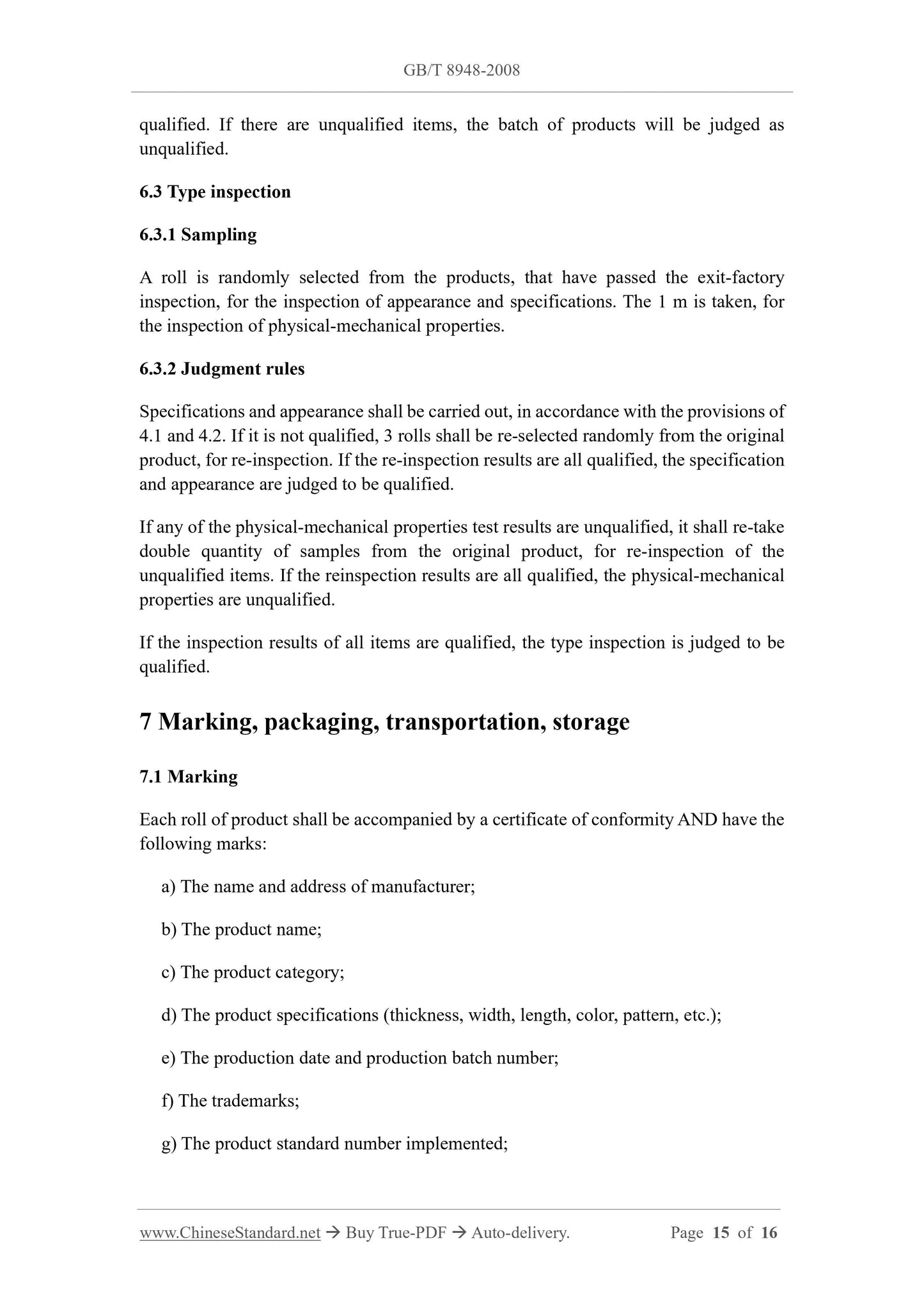1
/
of
7
www.ChineseStandard.us -- Field Test Asia Pte. Ltd.
GB/T 8948-2008 English PDF (GB/T8948-2008)
GB/T 8948-2008 English PDF (GB/T8948-2008)
Regular price
$190.00
Regular price
Sale price
$190.00
Unit price
/
per
Shipping calculated at checkout.
Couldn't load pickup availability
GB/T 8948-2008: Polyvinyl chloride artificial leather
Delivery: 9 seconds. Download (and Email) true-PDF + Invoice.Get Quotation: Click GB/T 8948-2008 (Self-service in 1-minute)
Newer / historical versions: GB/T 8948-2008
Preview True-PDF
Scope
This standard specifies the product classification, requirements, test methods,inspection rules and marking, packaging, transportation, storage of polyvinyl chloride
artificial leather.
This standard applies to the polyvinyl chloride artificial leather, which is made of plain
weave or twill fabric as the base, by adding plasticizers and other additives to the
polyvinyl chloride resin, through calendering or coating.
This standard does not apply to knitted cloth-based polyvinyl chloride artificial leather.
Basic Data
| Standard ID | GB/T 8948-2008 (GB/T8948-2008) |
| Description (Translated English) | Polyvinyl chloride artificial leather |
| Sector / Industry | National Standard (Recommended) |
| Classification of Chinese Standard | Y47 |
| Classification of International Standard | 59.080.40 |
| Word Count Estimation | 12,154 |
| Date of Issue | 2008-08-19 |
| Date of Implementation | 2009-05-01 |
| Older Standard (superseded by this standard) | GB/T 8948-1994 |
| Regulation (derived from) | National Standard Announcement 2008 No.14 (Total No.127) |
| Issuing agency(ies) | General Administration of Quality Supervision, Inspection and Quarantine of the People's Republic of China, Standardization Administration of the People's Republic of China |
| Summary | This standard specifies the classification of PVC artificial leather products, requirements, test methods, inspection rules and signs, packaging, transport and storage. This standard applies to plain or twill fabric as substrate, PVC artificial leather plus people plasticizers in polyvinyl chloride resins and other additives by rolling or coating methods such as made ??of. This standard does not apply to knitting cloth, PVC artificial leather. |
Share
